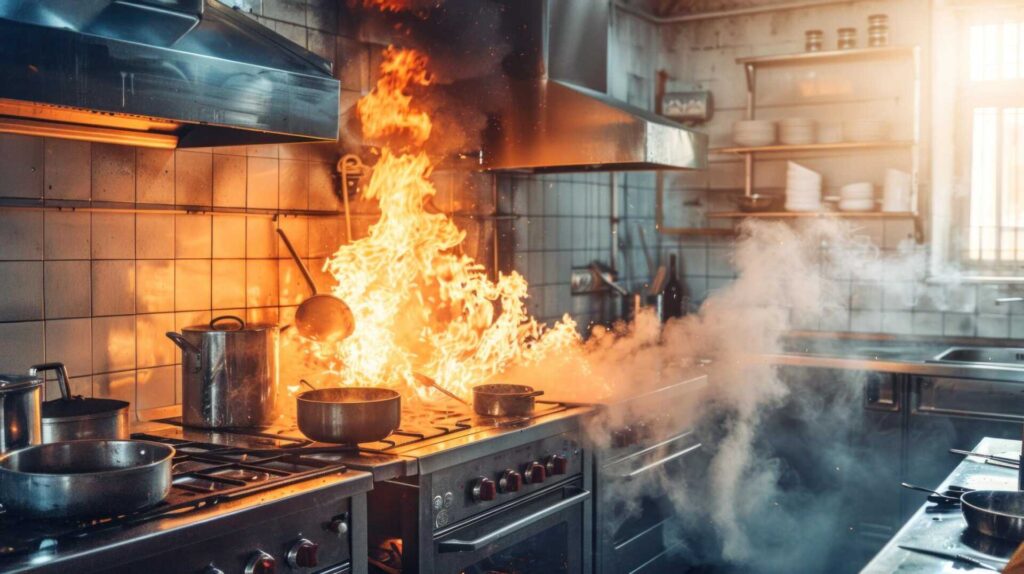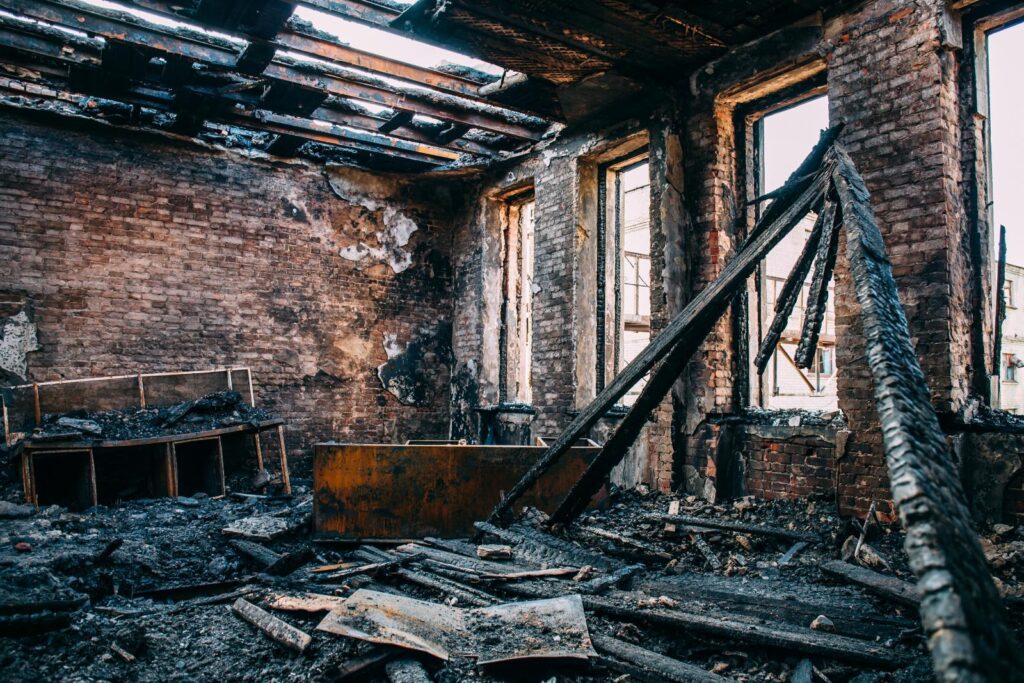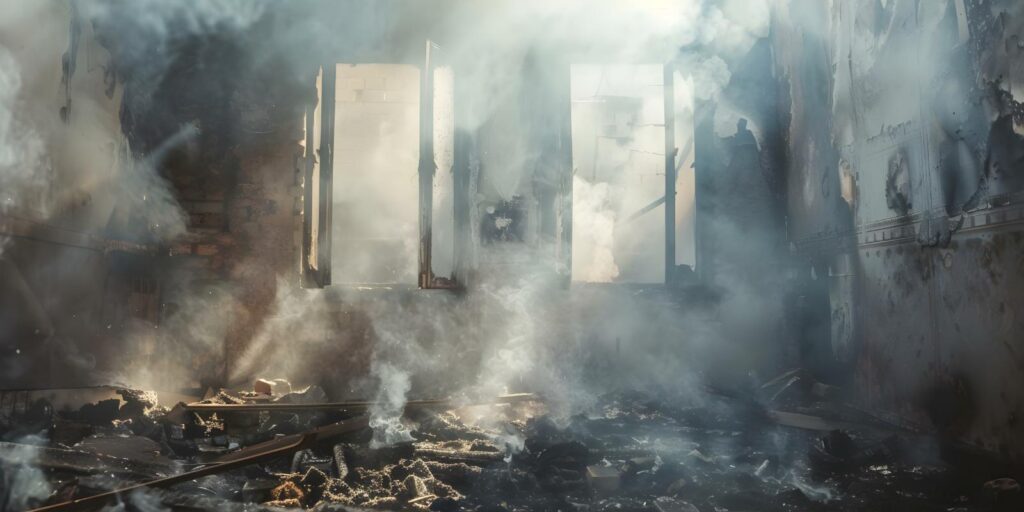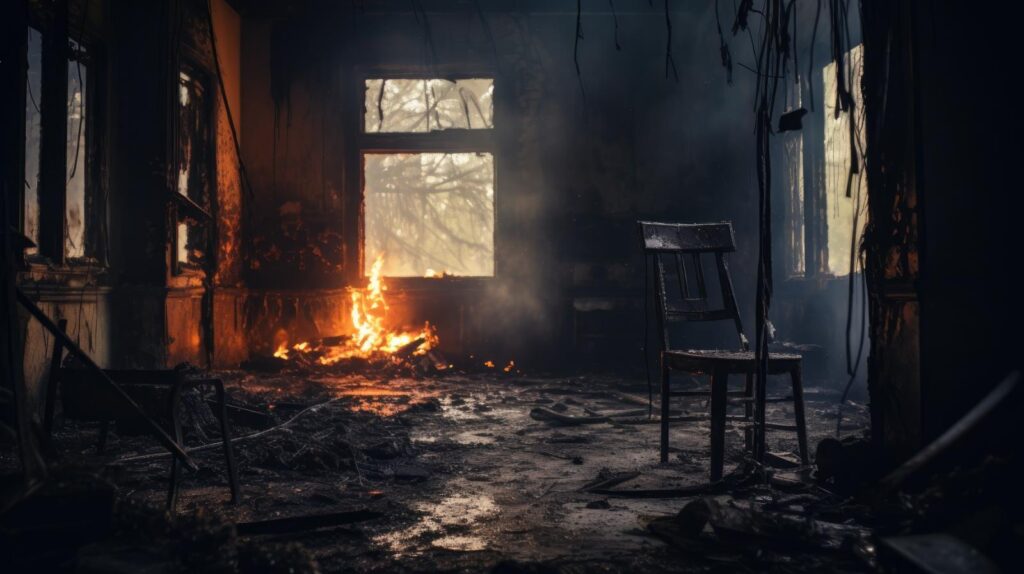
Contents
Is it true that the speed of your response can significantly impact the outcome of fire damage restoration? When a fire strikes, immediate action is crucial, but understanding the essential steps can make all the difference in your recovery process. You’ll need to assess the damage, prioritize safety, and handle water removal if applicable. Yet, the nuances of smoke and soot cleanup often raise more questions than they answer, leaving many unsure of how to proceed. What comes next might surprise you as you navigate this challenging journey.
Key Takeaways
- Assess and document all fire damage with detailed photographs and an inventory of affected items for insurance purposes.
- Ensure safety by evaluating structural stability and wearing appropriate protective gear before entering fire-damaged areas.
- Remove water using powerful extraction methods and dehumidifiers to prevent mold growth after firefighting efforts.
- Clean smoke and soot by identifying types of damage and using appropriate methods for removal, including specialized cleaning solutions.
- Engage professionals for restoration and repairs, ensuring thorough documentation for insurance claims and maintaining communication throughout the process.
Assessing the Damage
When assessing the damage after a fire, it’s crucial to take a systematic approach to ensure nothing is overlooked. Start by documenting every affected area meticulously; this process forms the backbone of your damage evaluation and will be invaluable for your insurance claims. Use a camera to capture images of the destruction, both inside and outside your property.
Next, categorize the damage based on severity. Identify structural damage, like compromised walls or roofs, and note any damage to personal belongings, appliances, or vehicles. Create a comprehensive list of affected items, including their estimated values. This detailed inventory will support your insurance claims and ensure you’re compensated fairly.
Once you’ve assessed the visible damage, pay attention to hidden risks. Check for lingering smoke or water damage, as these can lead to mold or further structural issues.
If you’re unsure about what to look for, consider enlisting a professional for assistance. They can help identify risks you mightn’t see and provide a thorough report that aligns with your insurance requirements.
Safety Precautions
Ensuring safety is a top priority during fire damage restoration. When you step into a fire-damaged area, it’s crucial to be aware of potential hazards. Fire safety isn’t just about extinguishing flames; it extends to protecting yourself from the aftermath. Before you begin any restoration work, make sure you’re equipped with the right personal protective equipment (PPE). This gear safeguards you and fosters a sense of community among those involved in the restoration process.
Here’s a quick reference guide to essential safety precautions:
| Safety Precaution | Purpose | Recommended Equipment |
|---|---|---|
| Assess Structural Stability | Ensure areas are safe to enter | Hard hat, safety boots |
| Wear Respiratory Protection | Guard against smoke inhalation | N95 masks or respirators |
| Use Fire-Resistant Clothing | Protect against heat and sparks | Fire-resistant coveralls |
Water Removal Techniques
After a fire, addressing water damage quickly is essential to prevent further deterioration and mold growth. You need to act promptly to ensure that your home or business remains safe and livable.
The first step in effective water removal is employing reliable water extraction methods. These techniques can include using powerful pumps and vacuums designed specifically for removing standing water. Depending on the extent of the damage, you may need to choose between submersible pumps for deep water or truck-mounted units for larger areas.
Next, moisture detection plays a crucial role in your restoration process. Invest in moisture meters to accurately assess damp areas that may not be visible. These devices can help you identify hidden moisture pockets within walls, ceilings, and floors.
Once you’ve pinpointed these areas, you can focus on drying them thoroughly to prevent mold growth.
After extracting the visible water, utilize dehumidifiers and fans to enhance airflow and promote additional drying. It’s vital to ensure that all affected materials, including carpets and drywall, are adequately dried or replaced if they’re beyond saving.
Smoke and Soot Cleanup
Smoke and soot cleanup is a crucial step in restoring your property after a fire. These residues can linger long after the flames are extinguished, creating an unsightly mess and potential health risks. Addressing smoke removal and soot treatment promptly is essential for both your safety and the integrity of your home.
To begin, assess the extent of the damage. This will guide you in determining the best approach for cleanup. It’s important to remember that different surfaces require different techniques. Here’s a quick reference to help you understand the types of soot and their appropriate cleanup methods:
| Type of Soot | Characteristics | Recommended Cleanup Method |
|---|---|---|
| Dry Soot | Powdery, easy to brush away | Dry sponge or vacuum with HEPA filter |
| Wet Soot | Greasy, sticky residue | Cleaning solution and scrub brush |
| Oily Soot | Comes from burning fuels | Solvent-based cleaners |
| Smoke Stains | Dark discoloration on walls | Chemical sponge or specialized cleaner |
After identifying the soot type, proceed with smoke removal. This can involve ventilating the area, using air purifiers, and applying specialized cleaning agents. Always wear protective gear to ensure your safety during this process.
Restoration and Repairs
Restoration and repairs are vital in returning your property to its pre-fire condition, both structurally and aesthetically. After experiencing fire damage, it’s essential to assess the extent of the destruction and prioritize the necessary repairs.
Begin by identifying any structural issues, such as weakened beams or compromised walls. Engaging professionals with expertise in fire restoration can ensure your home is safe and sound.
Once the structural integrity is confirmed, focus on repairing or replacing damaged materials. This can range from drywall and flooring to cabinets and fixtures. You’ll want to restore the function of these elements and their appearance, ensuring your space feels like home again.
Navigating insurance claims can be daunting, but your policy should cover many of these restoration costs. Document the fire damage meticulously, taking photographs as evidence for your insurer.
When filing claims, provide detailed information about the repairs needed, as this will help expedite the process and secure the funds required to bring your home back to life.
Throughout this journey, it’s important to maintain open communication with your restoration team and insurance adjusters. Your home is more than just a building; it’s where memories are made.
Final Thoughts
In fire damage restoration, many believe that DIY methods can save time and money, but the truth is that professional help is often essential. Without the right expertise, you risk overlooking critical structural issues or improperly addressing soot cleanup, which can lead to long-term problems. By trusting skilled professionals, you ensure a thorough restoration process, safeguarding your property and peace of mind. Remember, your safety and the integrity of your home should always come first.



